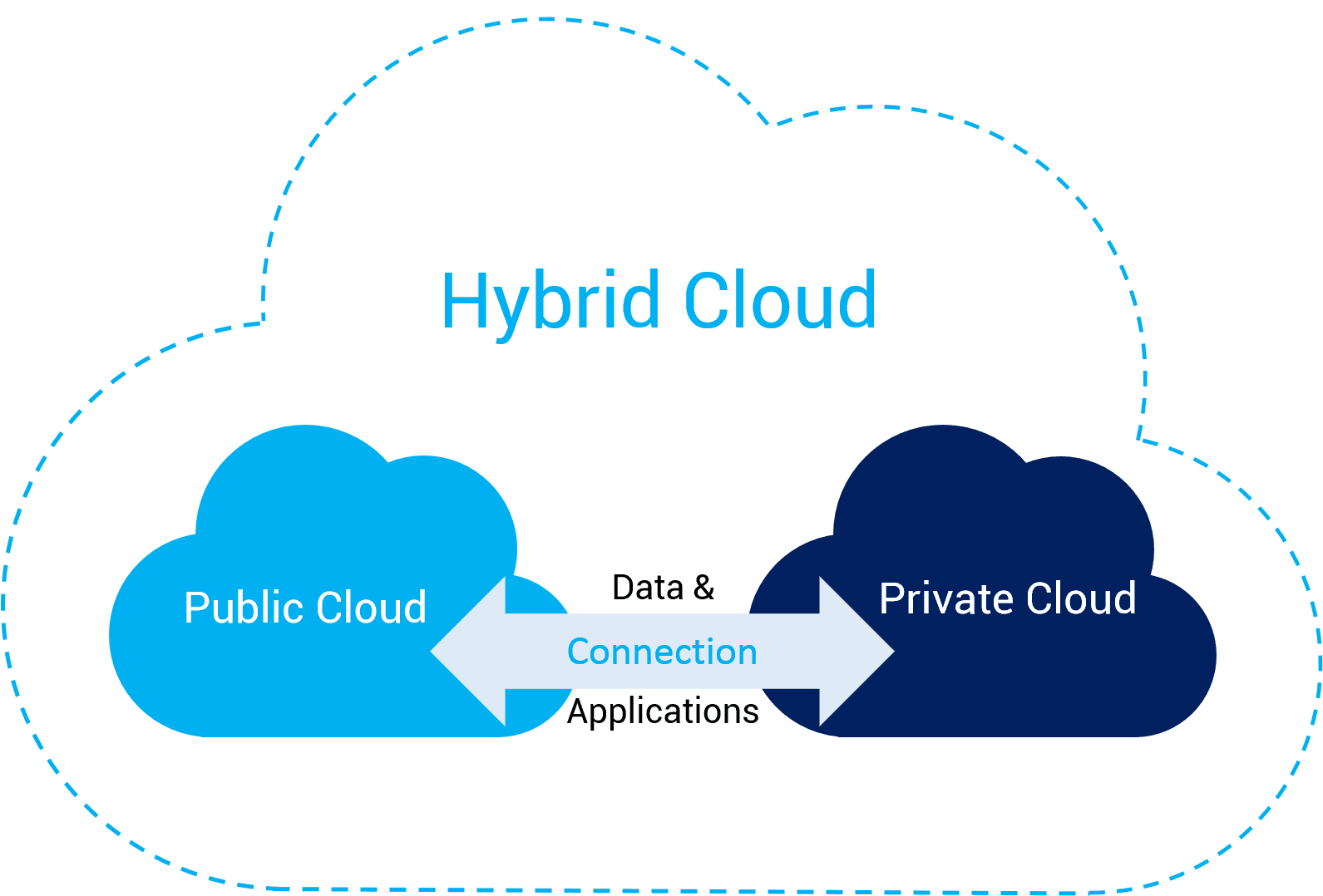By Shantanu Kaushik
The IT industry rarely faces turmoil due to the smart and intelligent systems working 24/7 to ensure service continuity and infrastructure availability. So far, we have discussed digital transformation trends, practices, and autonomous digital enterprises. Although we have a lot more to talk about, we will conclude this series by discussing the aspects of Hybrid Digital Infrastructure Management (HDIM).
HDIM has been a new buzzword for some time now. However, there is distributed approach towards its comprehension. Some IT professionals think it is a step forward with hybrid IT, and some think it is just another approach to delay cloud-native digital transformation. This article will discuss the implications of HDIM and how it has affected Buttercup Spices.
Gartner predicts, “HDIM addresses the key pain points of operational process, skills, and tools that come with hybrid infrastructures. At present, the HDIM market is in the very early stages of development, but 20% of enterprises are expected to use HDIM tools to optimize workload placement by 2022.”
Let's us know discuss the implementation of HDIM by using a fictional corporation as an example. Buttercup Spices is a fictional corporation in spice industry based in Southeast Asia. They have had basic IT infrastructure with 16 satellite offices that are not centrally managed. Buttercup Spices teamed with Alibaba Cloud for IT and Cloud Migration services making them their digital transformation partner.
They appointed a DX Team to put up a strategy for their digital transformation journey and started another subsidiary organization called Buttercup Spices Online Pvt. Ltd. This organization takes over all operations and departments of the parent organization while maintaining the services and operations of the core business values and customer base. This technique ensured that they will not lose any business while they are undergoing digital transformation.
The DX Team at Buttercup Spices created an option of enabling an on-premises data center at its headquarters. This enables them to operate under the newly formed Buttercup Spices online division, while centrally managing the satellite offices and newly formed offices in China and Thailand. Buttercup Spices uses the Alibaba Cloud infrastructure, including Alibaba Cloud CEN, VPC, Express Connect, and Smart Access Gateway (SAG).
The DX Team created another solution to preserve the parent firm while running cloud-native technology with the subsidiary organization. By setting up an on-premises managed data center (private cloud), the DX Team introduced the Hybrid Digital Infrastructure Management (HDIM) practice within the parent organization.
HDIM has created a buzz around the tech industry over the past few years. As on-premises data centers are phasing out, a spin-off called HDIM emerged. Hybrid Digital Infrastructure management (HDIM) is an approach to enable the use of cloud services and the services of an on-premises data center to pave the way for an organization to undergo digital transformation without service interruption.
HDIM is a management approach that enables organizations transitioning from traditional systems to the cloud that want to implement and continuing using both systems. Organizations using the on-premises and online infrastructure will experience their first taste of hybridity. Here, some systems and applications will get deployed to the on-premises data center, and others will be on the cloud. HDIM is an approach that enables a superior management capability to overcome complexities associated with this practice.
Cloud infrastructure has settled the woes of organizations that require flexibility and agility without the underlying management and maintenance requirements. This solution offers fully managed services, automated O&M, and super available infrastructure, everything an organization requires from a solution.
On-premises data centers are expensive to maintain and manage. As a result, the need for organizations to migrate to the cloud arises. However, migrations are time-consuming and are best done in phases. This scenario introduces hybridity into the equation. Certain organizations prefer hybridity since it provides infrastructure and application diversity.
After an organization utilizes the on-premises data center and related application with the newly acquired cloud and cloud-native technology, the need for some practice related to management arises. This can take away the woes associated with the management and maintenance counterpart of hybrid operations. You might be wondering, how is hybridity different from a hybrid cloud?

The Alibaba Cloud infrastructure presented us with a hybrid cloud. Hybrid cloud is a mix of public and private cloud services that enable organizations to leverage the best of both worlds. There are a wide array of services associated with the cloud, such as applications and solutions based on IAAS, PAAS, or SAAS. They operate while keeping private data in the private cloud.
Hybridity is a practice that uses hybrid cloud services and on-premises data centers to leverage the hybridity of operations with a management practice for IT infrastructure like HDIM. Organizations can leverage hybridity with good potential from cloud implementation and the diversity of a hybrid environment. HDIM reduces complications that arise due to migration scenarios or due to the management of multiple infrastructures.
The hybrid infrastructure can provide an organization with plenty of feature-rich solutions. It can provide tremendous improvements to the overall productivity of an organization. Buttercup Spices implemented Hybrid Digital Infrastructure Management to ease complexities related to:
HDIM also enabled Buttercup Spices to solve the complexities related to maintaining a hybrid environment and the infrastructure of on-premises data centers and cloud computing. After Buttercup Spices started to maximize its potential by using a hybrid setup, they faced new requirements. Buttercup Spices needed to restructure its operations to maximize its potential with cloud technology to minimize operational risks with the hybrid setup.
Alibaba Cloud enables its customers to reduce complexities with the hybrid model by providing academy courses to facilitate learning new skills and training staff. HDIM can facilitate greater visibility of operations to uncover security gaps and enable security teams to comprehend scenarios better and opt for solutions from a wide lineup of Alibaba Cloud products.
The HDIM concept is simple. It addresses issues and complexities related to the management of tools and practices involved with the cloud infrastructure and the hybrid cloud infrastructure in a combination called hybridity.
HDIM is not one solution. It is a plug-and-play solution methodology that applies to any system within the hybrid implementation. It could be payroll management for an organization or support and CRM for another. HDIM is not related to the solution; it is to the core infrastructure and service management. It is a method to bridge the gaps created by the differences in technological interfaces from legacy systems and the cloud.
Hybridity is a concept that is most likely to stay and get better with time. Nowadays, concepts like multi-hybrid cloud are popping up, which are fairly complex but can provide extreme usability for larger organizations with a plethora of solution sets and trade fields. The future is hybrid, and HDIM is the answer for unified management to provide seamless benefits of both hybrid cloud and on-premises setups with ease of management and high flexibility of operations.

2,593 posts | 792 followers
FollowAlibaba Clouder - April 16, 2021
Alibaba Clouder - March 24, 2021
Alibaba Clouder - March 30, 2021
Alibaba Clouder - March 29, 2021
Kidd Ip - October 27, 2025
Alibaba Clouder - May 4, 2021

2,593 posts | 792 followers
Follow Express Connect
Express Connect
A dedicated network connection between different cloud environments
Learn More Hybrid Cloud Solution
Hybrid Cloud Solution
Highly reliable and secure deployment solutions for enterprises to fully experience the unique benefits of the hybrid cloud
Learn More Networking Overview
Networking Overview
Connect your business globally with our stable network anytime anywhere.
Learn More Hybrid Cloud Storage
Hybrid Cloud Storage
A cost-effective, efficient and easy-to-manage hybrid cloud storage solution.
Learn MoreMore Posts by Alibaba Clouder